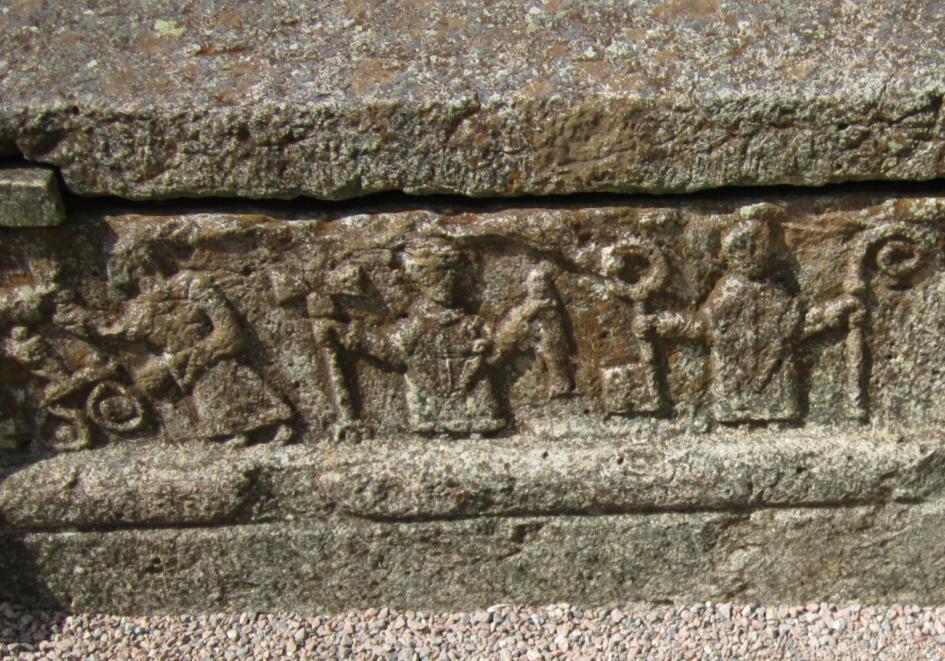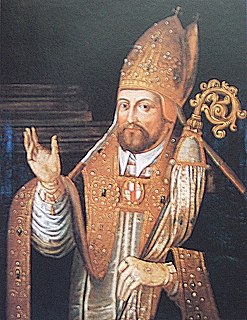|
Frutos Bernardo Patón De Ayala
Frutos Bernardo Patón de Ayala (1600 – 28 November 1671) was a Roman Catholic prelate who served as Bishop of Sigüenza (1669–1671) and Bishop of Coria (1664–1669)." Bishop Frutos Bernardo Patón de Ayala " '' Catholic-Hierarchy.org''. David M. Cheney. Retrieved August 31, 2016 Biography Frutos Bernardo Patón de Ayala was born in El Espinar, Spain in 1600 and ordained a priest in October 1631. On 23 June 1664, he was appointed during the papacy of |
Catholic Church
The Catholic Church, also known as the Roman Catholic Church, is the largest Christian church, with 1.3 billion baptized Catholics worldwide . It is among the world's oldest and largest international institutions, and has played a prominent role in the history and development of Western civilization.O'Collins, p. v (preface). The church consists of 24 ''sui iuris'' churches, including the Latin Church and 23 Eastern Catholic Churches, which comprise almost 3,500 dioceses and eparchies located around the world. The pope, who is the bishop of Rome, is the chief pastor of the church. The bishopric of Rome, known as the Holy See, is the central governing authority of the church. The administrative body of the Holy See, the Roman Curia, has its principal offices in Vatican City, a small enclave of the Italian city of Rome, of which the pope is head of state. The core beliefs of Catholicism are found in the Nicene Creed. The Catholic Church teaches that it is the on ... [...More Info...] [...Related Items...] OR: [Wikipedia] [Google] [Baidu] |
Pope Alexander VII
Pope Alexander VII ( it, Alessandro VII; 13 February 159922 May 1667), born Fabio Chigi, was head of the Catholic Church and ruler of the Papal States from 7 April 1655 to his death in May 1667. He began his career as a vice- papal legate, and he held various diplomatic positions in the Holy See. He was ordained as a priest in 1634, and he became bishop of Nardo in 1635. He was later transferred in 1652, and he became bishop of Imola. Pope Innocent X made him secretary of state in 1651, and in 1652, he was appointed a cardinal. Early in his papacy, Alexander, who was seen as an anti-nepotist at the time of his election, lived simply; later, however, he gave jobs to his relatives, who eventually took over his administration. His administration worked to support the Jesuits. However, his administration's relations with France were strained due to his frictions with French diplomats. Alexander was interested in architecture and supported various urban projects in Rome. He als ... [...More Info...] [...Related Items...] OR: [Wikipedia] [Google] [Baidu] |
Bishops Appointed By Pope Clement IX
A bishop is an ordained clergy member who is entrusted with a position of authority and oversight in a religious institution. In Christianity, bishops are normally responsible for the governance of dioceses. The role or office of bishop is called episcopacy. Organizationally, several Christian denominations utilize ecclesiastical structures that call for the position of bishops, while other denominations have dispensed with this office, seeing it as a symbol of power. Bishops have also exercised political authority. Traditionally, bishops claim apostolic succession, a direct historical lineage dating back to the original Twelve Apostles or Saint Paul. The bishops are by doctrine understood as those who possess the full priesthood given by Jesus Christ, and therefore may ordain other clergy, including other bishops. A person ordained as a deacon, priest (i.e. presbyter), and then bishop is understood to hold the fullness of the ministerial priesthood, given responsibility by ... [...More Info...] [...Related Items...] OR: [Wikipedia] [Google] [Baidu] |
Bishops Appointed By Pope Alexander VII
A bishop is an ordained clergy member who is entrusted with a position of authority and oversight in a religious institution. In Christianity, bishops are normally responsible for the governance of dioceses. The role or office of bishop is called episcopacy. Organizationally, several Christian denominations utilize ecclesiastical structures that call for the position of bishops, while other denominations have dispensed with this office, seeing it as a symbol of power. Bishops have also exercised political authority. Traditionally, bishops claim apostolic succession, a direct historical lineage dating back to the original Twelve Apostles or Saint Paul. The bishops are by doctrine understood as those who possess the full priesthood given by Jesus Christ, and therefore may ordain other clergy, including other bishops. A person ordained as a deacon, priest (i.e. presbyter), and then bishop is understood to hold the fullness of the ministerial priesthood, given responsibility by ... [...More Info...] [...Related Items...] OR: [Wikipedia] [Google] [Baidu] |
17th-century Roman Catholic Bishops In Spain
The 17th century lasted from January 1, 1601 ( MDCI), to December 31, 1700 ( MDCC). It falls into the early modern period of Europe and in that continent (whose impact on the world was increasing) was characterized by the Baroque cultural movement, the latter part of the Spanish Golden Age, the Dutch Golden Age, the French ''Grand Siècle'' dominated by Louis XIV, the Scientific Revolution, the world's first public company and megacorporation known as the Dutch East India Company, and according to some historians, the General Crisis. From the mid-17th century, European politics were increasingly dominated by the Kingdom of France of Louis XIV, where royal power was solidified domestically in the civil war of the Fronde. The semi-feudal territorial French nobility was weakened and subjugated to the power of an absolute monarchy through the reinvention of the Palace of Versailles from a hunting lodge to a gilded prison, in which a greatly expanded royal court could be more easily k ... [...More Info...] [...Related Items...] OR: [Wikipedia] [Google] [Baidu] |
Antonio Fernández Del Campo Angulo Y Velasco
Antonio Fernández del Campo Angulo y Velasco (27 September 1619 – 23 December 1681) was a Roman Catholic prelate who served as Bishop of Jaén (1671–1681), Bishop of Coria (1669–1671), and Bishop of Tui (1666–1669). ''(in Latin)''" Bishop Antonio Fernández del Campo Angulo y Velasco" '' Catholic-Hierarchy.org''. David M. Cheney. Retrieved August 31, 2016 Biography Antonio Fernández del Campo Angulo y Velasco was born in Bilbao, Spain on 27 September 1619.[...More Info...] [...Related Items...] OR: [Wikipedia] [Google] [Baidu] |
Gabriel Vázquez Saavedra Y Rojas
Gabriel Vázquez Saavedra y Rojas (1607–1664) was a Roman Catholic prelate who served as Bishop of Coria (1663–1664)." Bishop Gabriel Vázquez Saavedra y Rojas " '' Catholic-Hierarchy.org''. David M. Cheney. Retrieved August 27, 2016 Biography Gabriel Vázquez Saavedra y Rojas was born in , in 1607. On 27 August 1663, he was appointed during the papacy of |
Pope Clement IX
Pope Clement IX ( la, Clemens IX; it, Clemente IX; 28 January 1600 – 9 December 1669), born Giulio Rospigliosi, was head of the Catholic Church and ruler of the Papal States from 20 June 1667 to his death in December 1669. Biography Early life and education Giulio Rospigliosi was born in 1600 to the Rospigliosi family, a noble family of Pistoia in the Grand Duchy of Tuscany to Giacomo and Caterina Rospigliosi. He studied at the Seminario Romano and later at the University of Pisa as a pupil of the Jesuits, receiving doctorates in theology, philosophy and both canon and civil law in 1623. After receiving his doctorates, he taught theology there as a professor from 1623 to 1625. Episcopate and cardinalate Later Rospigliosi worked closely with Pope Urban VIII (1623–1644) where he worked in the diplomatic corps as the Referendary of the Apostolic Signatura. He was appointed as the Titular Archbishop of Tarsus in 1644 and later received episcopal consecration in the Vatican ... [...More Info...] [...Related Items...] OR: [Wikipedia] [Google] [Baidu] |
Catholic-Hierarchy
''Catholic-Hierarchy.org'' is an online database of bishops and dioceses of the Roman Catholic Church and Eastern Catholic Churches. The website is not officially sanctioned by the Church. It is run as a private project by David M. Cheney in Kansas City.Katholisch Deutsch: "Sie sammeln das Wissen der Weltkirche" Von Felix Neumann 08.08.2017 Origin and contents In the 1990s, David M. Cheney created a simple internet website that documented the Roman Catholic bishops in his home state of Texas—many of whom did not have webpages. In 2002, after moving to the Midwest, he officially created the present website catholic-hierarchy.org and expanded to cover the United States and eventually the world.[...More Info...] [...Related Items...] OR: [Wikipedia] [Google] [Baidu] |
Roman Catholic Diocese Of Sigüenza-Guadalajara
The Roman Catholic Diocese of Sigüenza-Guadalajara ( la, Seguntin(us) – Guadalaiaren(sis)) is a diocese located in the cities of Sigüenza and Guadalajara, Spain in the Ecclesiastical province of Toledo in Spain. It is in the located in the secular Spanish province of Guadalajara in Castile, central Spain. It is bounded on the north by Soria, on the east by Zaragoza and Teruel, on the south by Cuenca and on the west by Guadalajara and Segovia. History The diocese was established in 589 AD: the fictitious chronicles pretended that St. Sacerdos of Limoges in France had been its bishop; Protogenes was present as Bishop of Sigüenza at the Third Council of Toledo and again the same Protogenes at Gundemar's council in 610; Ilsidclus assisted at the fourth, fifth and sixth councils; Wideric, at the seventh to the tenth; Egica, at the eleventh; Ela, at the twelfth, thirteenth and fourteenth; Gunderic, at the fifteenth and sixteenth. The succession of bishops continued unde ... [...More Info...] [...Related Items...] OR: [Wikipedia] [Google] [Baidu] |
Bishop Of Sigüenza
A bishop is an ordained clergy member who is entrusted with a position of authority and oversight in a religious institution. In Christianity, bishops are normally responsible for the governance of dioceses. The role or office of bishop is called episcopacy. Organizationally, several Christian denominations utilize ecclesiastical structures that call for the position of bishops, while other denominations have dispensed with this office, seeing it as a symbol of power. Bishops have also exercised political authority. Traditionally, bishops claim apostolic succession, a direct historical lineage dating back to the original Twelve Apostles or Saint Paul. The bishops are by doctrine understood as those who possess the full priesthood given by Jesus Christ, and therefore may ordain other clergy, including other bishops. A person ordained as a deacon, priest (i.e. presbyter), and then bishop is understood to hold the fullness of the ministerial priesthood, given responsibility by ... [...More Info...] [...Related Items...] OR: [Wikipedia] [Google] [Baidu] |
Bishop Of Coria
A bishop is an ordained clergy member who is entrusted with a position of authority and oversight in a religious institution. In Christianity, bishops are normally responsible for the governance of dioceses. The role or office of bishop is called episcopacy. Organizationally, several Christian denominations utilize ecclesiastical structures that call for the position of bishops, while other denominations have dispensed with this office, seeing it as a symbol of power. Bishops have also exercised political authority. Traditionally, bishops claim apostolic succession, a direct historical lineage dating back to the original Twelve Apostles or Saint Paul. The bishops are by doctrine understood as those who possess the full priesthood given by Jesus Christ, and therefore may ordain other clergy, including other bishops. A person ordained as a deacon, priest (i.e. presbyter), and then bishop is understood to hold the fullness of the ministerial priesthood, given responsibility by ... [...More Info...] [...Related Items...] OR: [Wikipedia] [Google] [Baidu] |
.jpg)





